Birdfinding.info ⇒ An insular form of Carib Grackle that is generally common and conspicuous in its limited range. Especially common on Barbados and Antigua, where it can be found nearly anywhere.
“Barbados Grackle”
Quiscalus lugubris fortirostris
Endemic to Barbados and St. Vincent. Introduced to the Leeward Islands. Occurs in open, lightly wooded, and settled habitats, including agricultural areas and towns.
Consists of two subspecies: fortirostris of Barbados and contrusus of St. Vincent. Fortirostris has been introduced to Antigua, Barbuda, St. Kitts, and Nevis, and may occur elsewhere in the Leeward Islands.
Identification
A black grackle with pale eyes and a short tail. It is normally the only grackle in its range, though it may sometimes overlap with other forms of Carib Grackle due to inter-island wandering facilitated by cruise ships.
As with all grackles, the central tail feathers are the longest, giving the tail a wedge-shaped profile, and it often holds its tail in a “keel” shape (i.e., as a V or U if viewed in cross-section).
Adults of both sexes have pale yellow eyes. Immatures have dark eyes that lighten as they age.
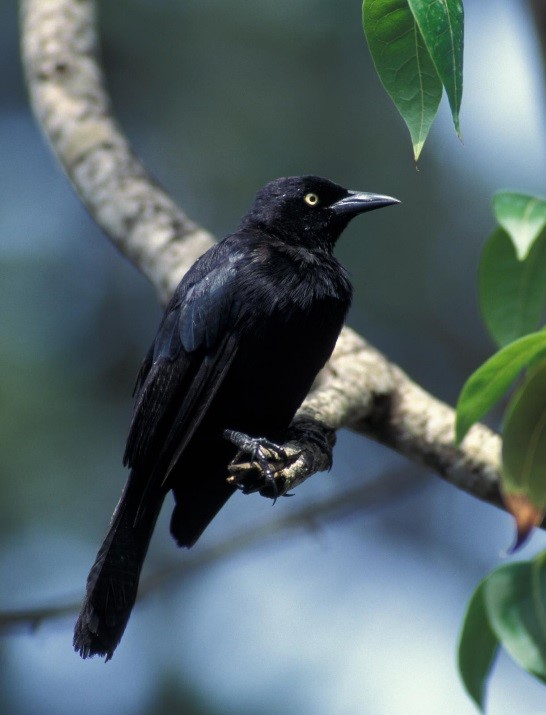
“Barbados Grackle,” Q. l. fortirostris, male. (Holetown, Saint James Parish, Barbados; November 3, 1995.) © Marvin Hyett
Males are likely indistinguishable from other forms of Carib Grackle: all-black with purplish iridescence on the head and body, and greenish on the wings and tail.
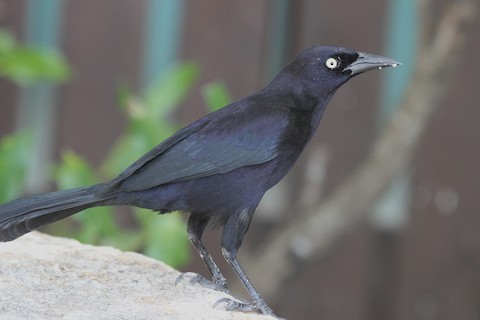
“Barbados Grackle,” Q. l. fortirostris, male. (McKinnon’s Pond, Antigua; February 16, 2014.) © Stephen Gast
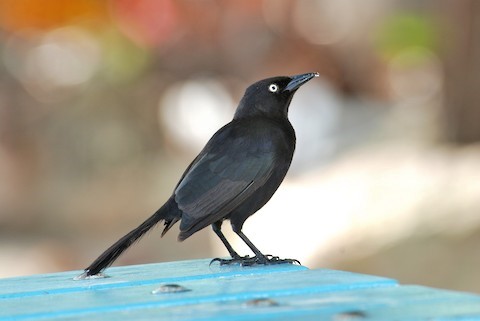
“Barbados Grackle,” Q. l. fortirostris, male. (St. Phillip, Barbados; November 8, 2007.) © Gary Davidson

“Barbados Grackle,” Q. l. fortirostris, male. (St. Phillip, Barbados; November 8, 2007.) © Gary Davidson
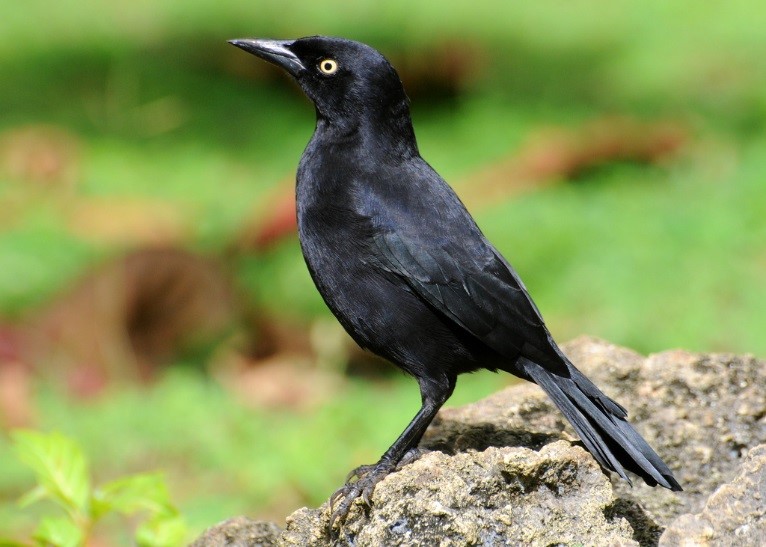
“Barbados Grackle,” Q. l. fortirostris, male. (Barbados; November 3, 2011.) © bajandiver

“Barbados Grackle,” Q. l. fortirostris, male. (Graeme Hall Nature Sanctuary, Christ Church, Barbados; March 1, 2018.) © Brian Sullivan

“Barbados Grackle,” Q. l. fortirostris, male. (St. John’s, Antigua; March 19, 2018.) © Rob Jantos
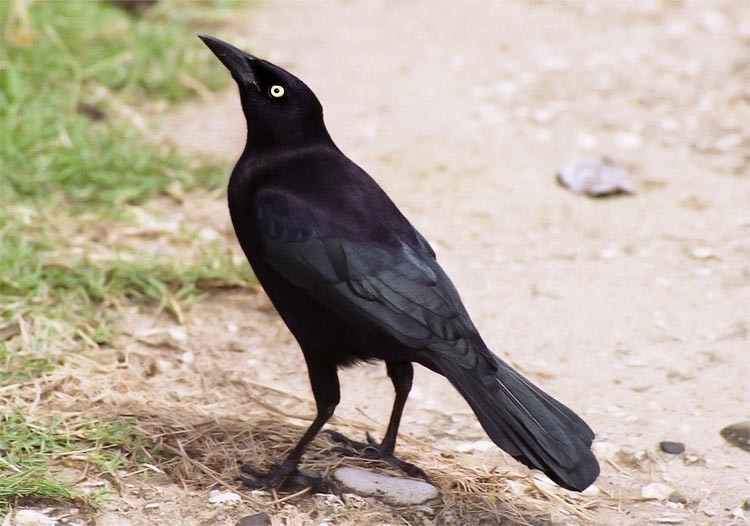
“Barbados Grackle,” Q. l. fortirostris, male. (Barbados; October 2004.) © Dave Mangham/www.wildlifephotos.org.uk
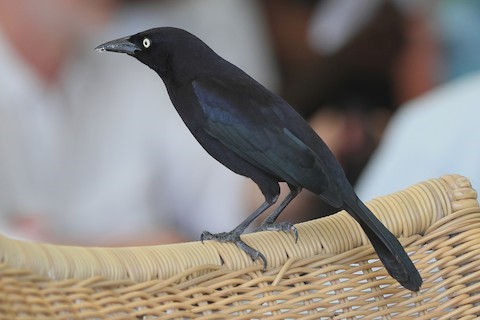
“Barbados Grackle,” Q. l. fortirostris, male. (Yeptons Pond, Antigua; February 16, 2014.) © Stephen Gast
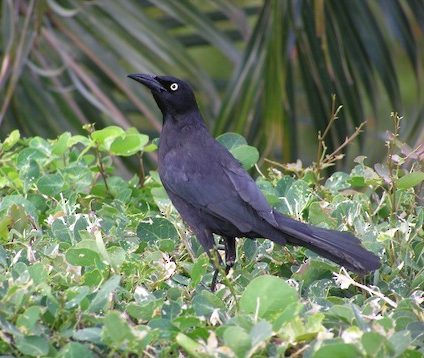
“Barbados Grackle,” Q. l. contrusus, male—this subspecies is somewhat larger than the Barbadian fortirostris. (Botanical Gardens, Kingstown, St. Vincent; March 31, 2008.) © James Holmes
Females on Barbados and the Leeward Islands (fortirostris) are brownish-black overall, often paler and browner around the head, especially on the throat.
Females of the St. Vincent subspecies (contrusus) are darker, dull-black overall.
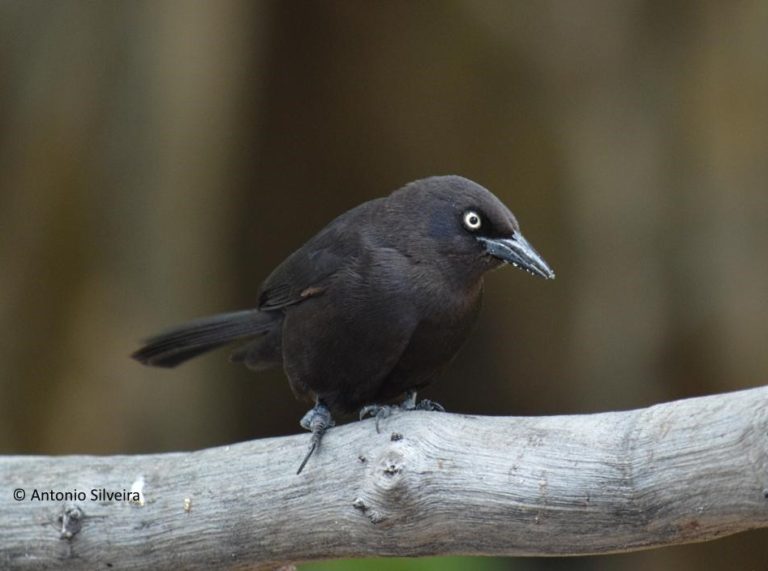
“Barbados Grackle,” Q. l. fortirostris, female. (Rockley Beach, Christ Church Parish, Barbados; March 22, 2015.) © Antonio Silveira

“Barbados Grackle,” Q. l. fortirostris, female. (Nevis Street Wetland, St. John’s, Antigua; January 7, 2013.) © Douglas Faulder

“Barbados Grackle,” Q. l. fortirostris, female showing paler-than-average coloration for this subspecies. (Barbados; April 23, 2009.) © Mikko Pyhälä

“Barbados Grackle,” Q. l. fortirostris, female. (McKinnon’s Pond, Antigua; March 14, 2019.) © Larry Therrien
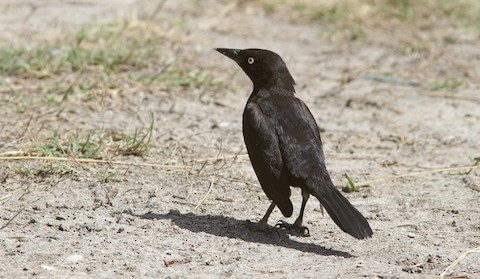
“Barbados Grackle,” Q. l. fortirostris, female. (McKinnon’s Pond, Antigua; March 14, 2019.) © Larry Therrien
Notes
Polytypic form consisting of two recognized subspecies, fortirostris of Barbados, and introduced to Antigua, Barbuda, St. Kitts, and Nevis, and contrusus of St. Vincent. Formerly classified as a full species.
Frontiers of Taxonomy: “Barbados Grackle.” The “Barbados Grackle” was initially considered a species separate from the Carib Grackle at least in part because these two subspecies are less sexually dimorphic than the other six recognized subspecies of Carib Grackle. However, female coloration varies significantly both among and within the eight subspecies, which suggests that such variation might not be sufficient as the basis for species-level classification in this group.
References
eBird. 2019. eBird: An online database of bird distribution and abundance. Cornell Lab of Ornithology, Ithaca, N.Y. http://www.ebird.org. (Accessed June 4, 2019.)
Fraga, R. 2019. Carib Grackle (Quiscalus lugubris). In Handbook of the Birds of the World Alive (J. del Hoyo, A. Elliott, J. Sargatal, D.A. Christie, and E. de Juana, eds.). Lynx Edicions, Barcelona. https://www.hbw.com/node/62285. (Accessed June 4, 2019.)
Jaramillo, A., and P. Burke. 1999. New World Blackbirds: The Icterids. Princeton University Press, Princeton, N.J.
Raffaele, H., J. Wiley, O. Garrido, A. Keith, and J. Raffaele. 1998. A Guide to the Birds of the West Indies. Princeton University Press, Princeton, N.J.